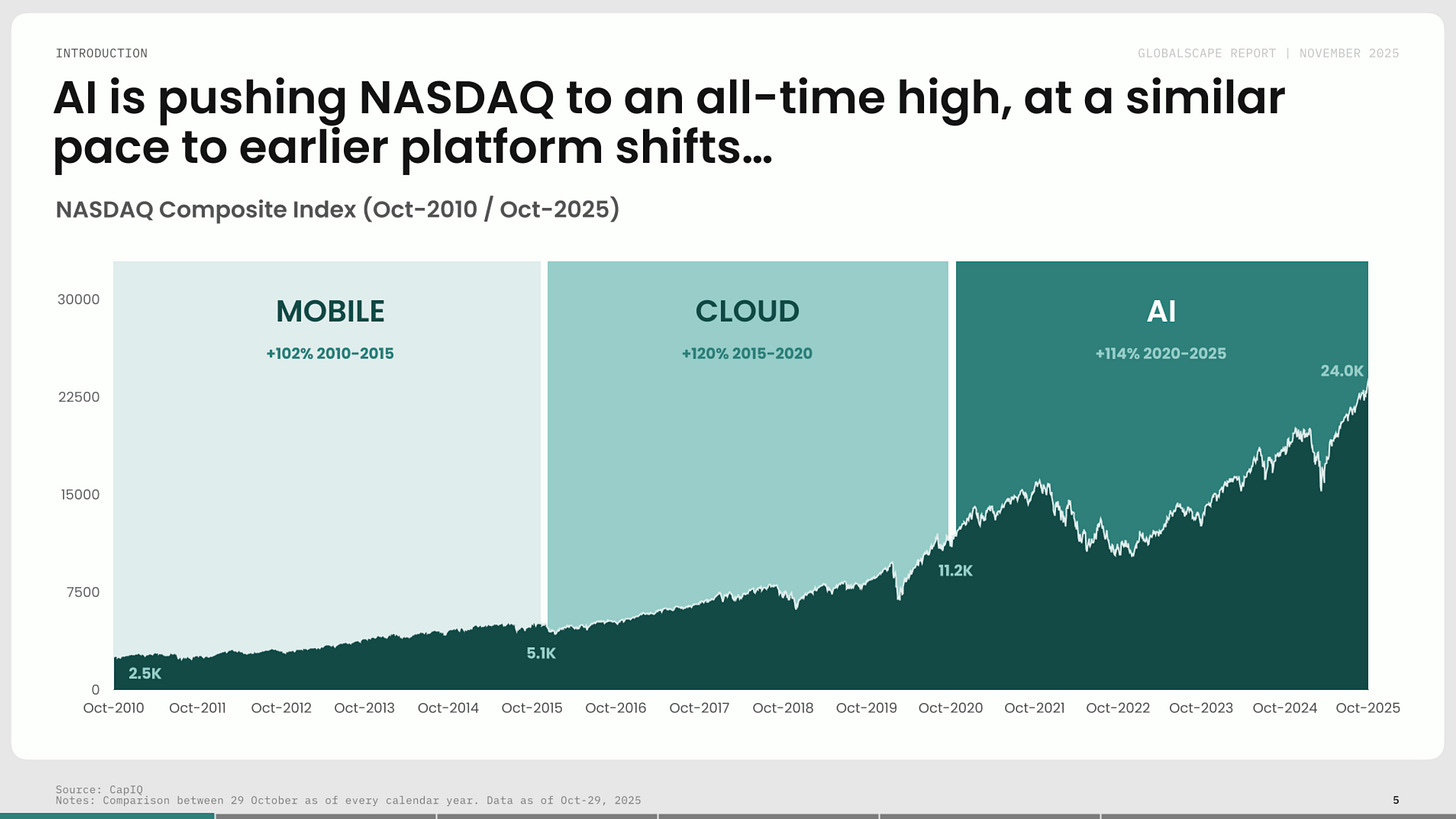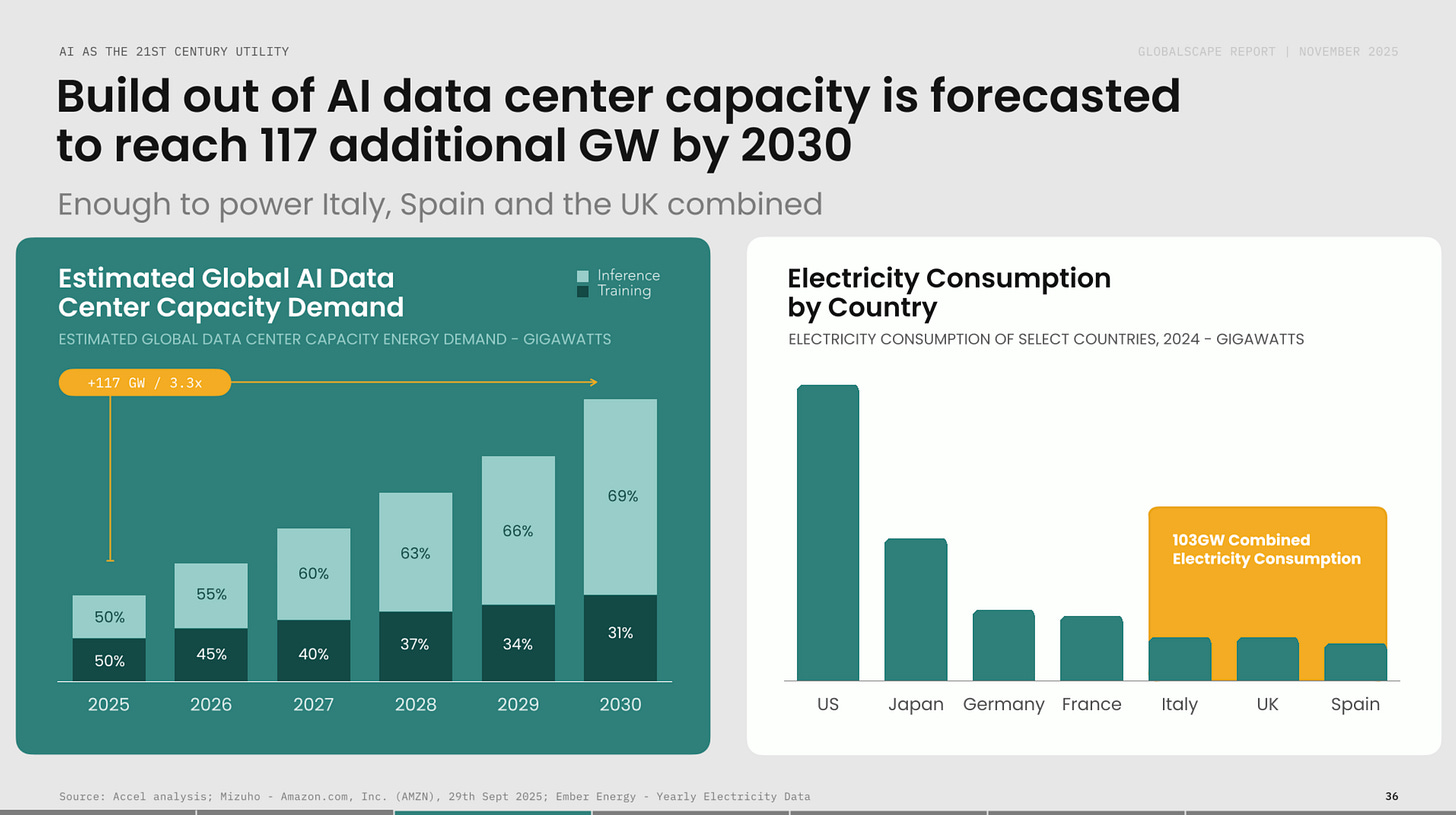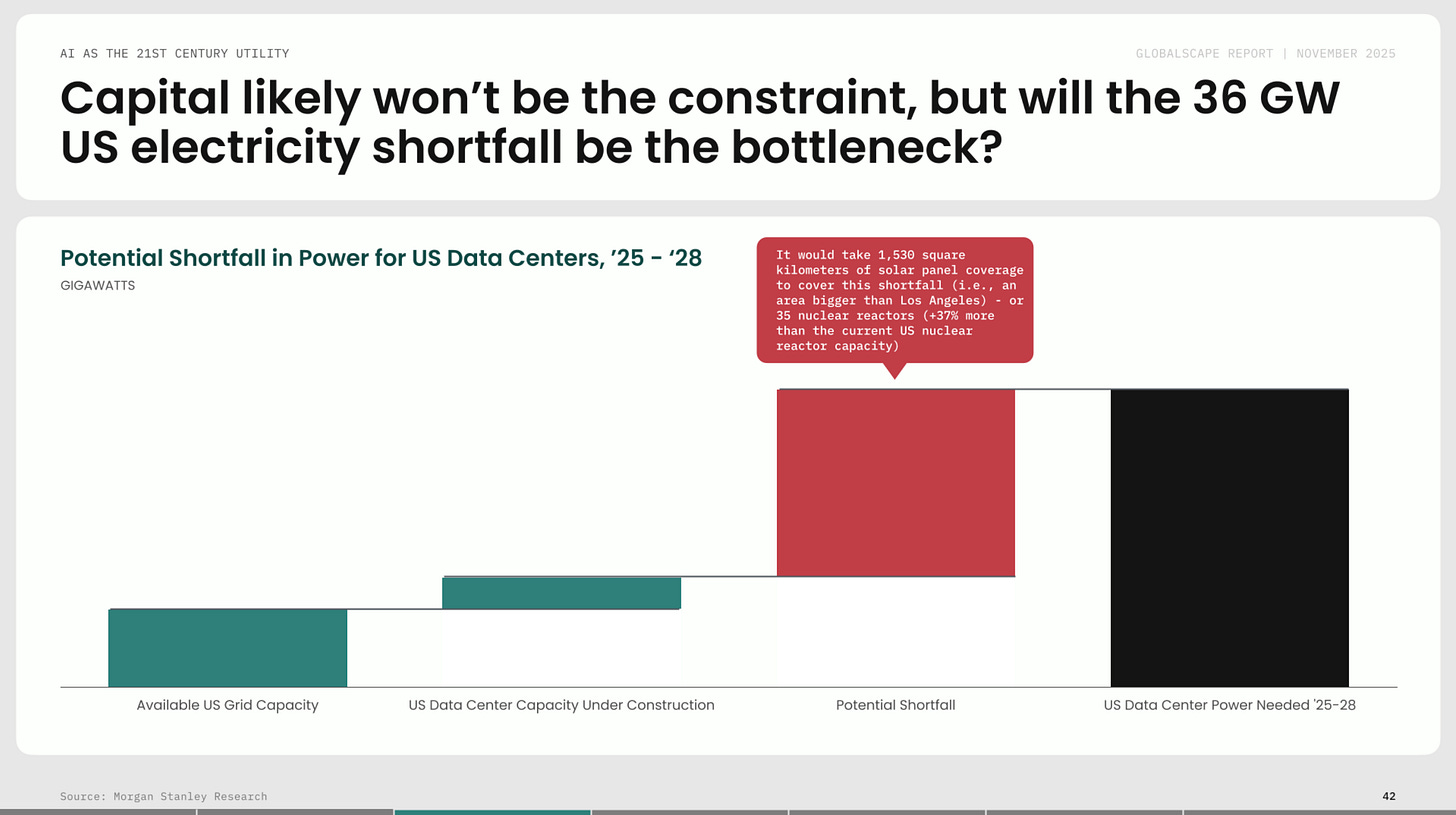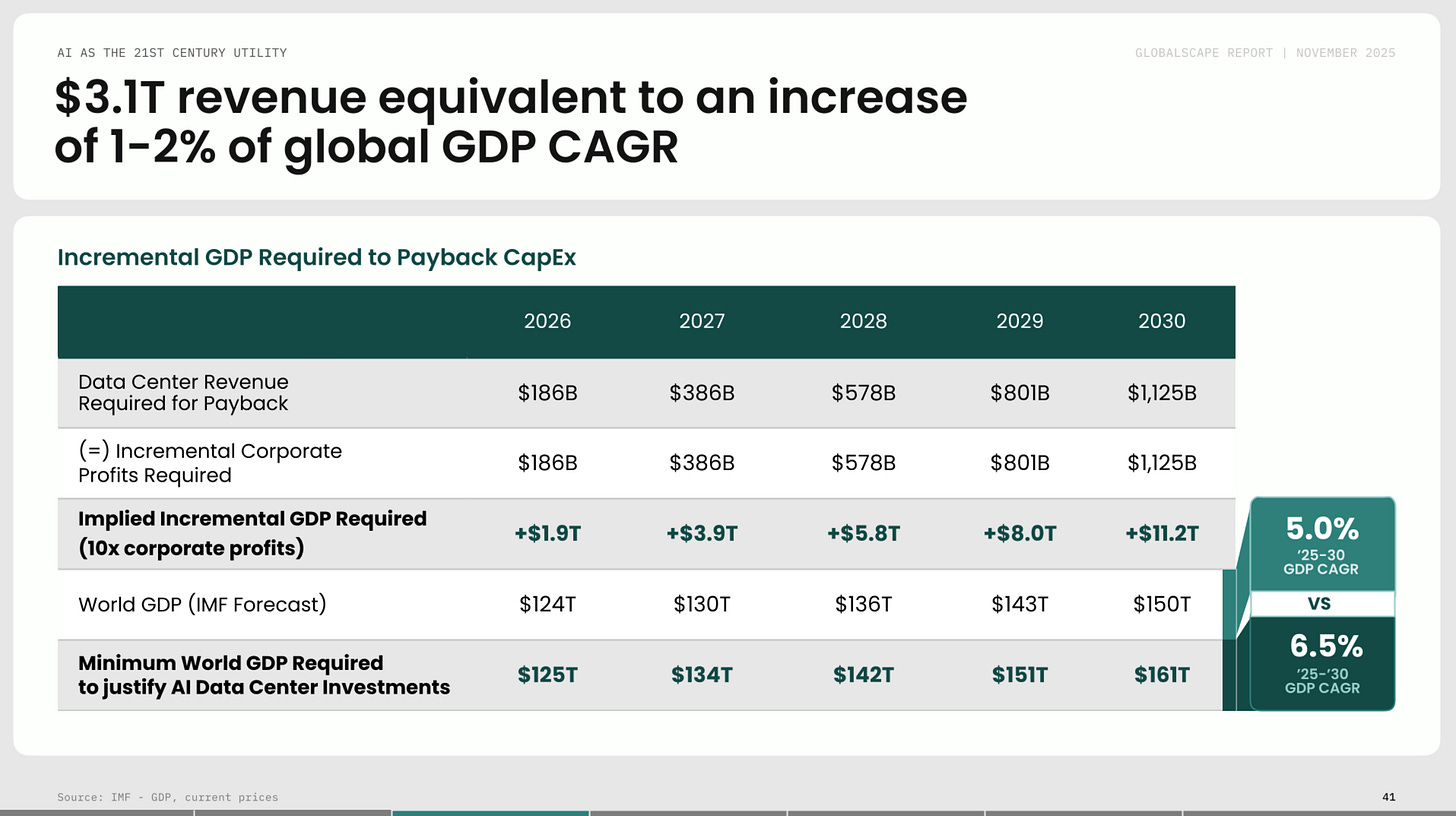🌊 Accel’s AI report
Accel Globalscape 2025: $4.1T AI data-center CapEx, 117GW power gap, training vs inference, agents moving to payroll, and Europe competing across the AI stack.
👋 I’m Ivan. This is a weekly brief on how top 1% startups raise venture capital and grow.
Hello there!
Accel just dropped an important research report on the Race to Compute in 2025.
I read the whole thing. Here are the 10 insights that matter most:
1. The AI boom is a platform shift
What happened:
AI isn’t a short-term hype cycle. It’s likely the start of a new computing era. The NASDAQ is up +114% since 2020, almost entirely driven by AI companies. You can read my take on why the bubble vs no bubble debate is the wrong question to ask.
The details:
Every tech wave changed how humans and computers talk.
The PC let us read code.
The Internet let us read and share.
The Cloud let us read and write in real time.
Now AI lets software read, write, and think.
The Transformer architecture (the “T” in GPT) broke software out of its rule-based box. Before, computers could only follow exact commands. Now they can understand context and respond in natural language. For the first time, code understands us and can even write or execute code itself.
So what:
We’ve moved from software that follows instructions to software that collaborates. It’s not fully autonomous yet, but it’s already semi-autonomous enough to reason, plan, and act. And that unlocks a new kind of economy built on agents, automation, and intelligence at scale.
2. Compute is the new utility
What happened:
We’re entering a $4.1T buildout of AI data centers, the factories of the AI age.
The details:
Every major wave had its physical backbone. Railroads for the Industrial Revolution. Power plants for electricity. Now, data centers are the backbone of AI. That $4.1T is CapEx, basically money spent on things you build once and use for years: land, servers, chips, cooling systems, fiber, and power infrastructure.
The chart shows that more than half of all the data-center capacity expected by 2030 is already committed led by OpenAI, Meta, and Microsoft. They’ve locked in about 65 gigawatts of power, which is HUGE.
Why spend this much? Because both phases are power hungry:
Training is when you teach a model, like sending it to school. It takes massive compute upfront, done once per generation.
Inference is when you use the model, like asking it a question. It happens billions of times a day, and it’s what drives recurring energy demand (will grow fastest).
So what:
This is the real infrastructure behind the Agentic Revolution. Instead of generating electricity, these plants generate intelligence. They are the power grid of the next economy, one that runs on reasoning.
3. The bottleneck isn’t money, it’s electricity
What happened:
Even with trillions in funding, the real constraint is power, not capital.
The details:
The US grid will face a 36 gigawatt shortfall by 2028, the equivalent of 35 nuclear reactors. Data centers built for the AI boom are colliding with power systems designed for another century. Every hyperscaler now talks less about chips and more about megawatts.
So what:
AI has outgrown the digital world and hit the limits of the physical one. The next big unlock won’t come from code but from kilowatts. And if, as Stratechery notes, this is a bubble, it might still be a productive one, because when it pops, the world will be left with abundant, cleaner power that fuels the next wave.
4. AI must pay for itself, and it can
What happened:
AI infrastructure has to prove it can pay for itself, and for now, the math roughly works.
The details:
To recoup $4.1T in CapEx, global data centers need to generate about $3.1T in new annual revenue by 2030. That’s roughly 1–2% of global GDP, which puts AI’s economic impact on par with past industrial revolutions. In practical terms, it means every dollar invested in chips, cooling, and power has to translate into new productivity, not just speculation. Inference costs are falling, adoption curves are steepening, and companies are starting to measure AI in ROI, not just R&D.
So what:
The first model race was about intelligence. The next race is both about intelligence and economics, who can make increasingly better reasoning profitable.
5. The US dominates models, but Europe is accelerating across the stack
🔐 Startup Riders Pro only: The rest of this drop covers how Europe’s catching up, how AI-native startups scale, and what the next 5 waves to build for look like.





